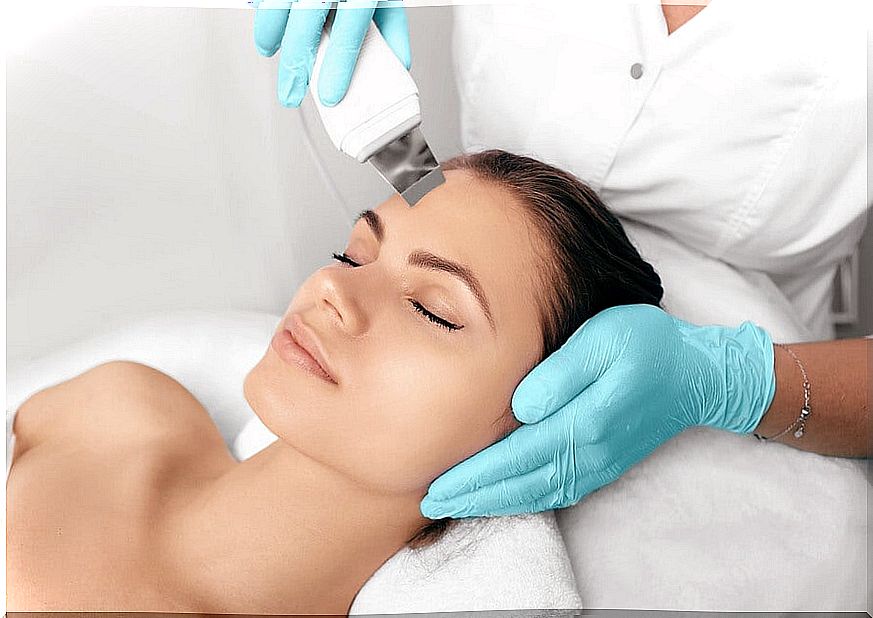Hyperpigmentation: Why Does It Happen?
Hyperpigmentation are areas of the skin where the pigment known as melanin is more concentrated. This causes the area to take on a darker tone, which can manifest itself through moles, freckles or spots. Why happens? How to avoid it?
First of all, it should be clarified that the skin has its color thanks to natural pigments such as hemoglobin, melanin and carotenoids. Melanin, in particular, colors the eyes, skin, and hair. It is formed in melanosomes from its precursor, tyrosine and tyrosinase.
Its main function is the protection of DNA against the damage that ultraviolet radiation can cause. However, when overstimulated, it leads to unsightly hyperpigmentation.
Why is hyperpigmentation generated?
As an article in the scientific journal Pigment Cell & Melanoma Research explains , one of the frequent causes of hyperpigmentation is exposure to sunlight. It stimulates the skin to form melanin and provides a protective effect against UV rays.
In fact, this is the reason why some people decide to tan. However, when the exposure is prolonged, this process is altered and skin damage occurs that, later, manifests itself with hyperpigmentation. Some of the associated risk factors are the following:
- Genetic predisposition.
- Senile spots : produced by age, but also by sun exposure.
- Post-inflammatory : it arises after the healing process of a skin wound, such as a burn, a cut, psoriasis or eczema. In particular, there is an area without relief, but darker.
- Hormonal : melasma or chloasma. Irregularly shaped dark areas appear when female sex hormones stimulate melanin production by exposing the skin to the sun, either during pregnancy or with the intake of birth control pills.
- Due to sun exposure : it is the main cause of hyperpigmentation. All skin spots, whether they are age spots, freckles, melasma or post-inflammatory hyperpigmentation, will change their hue due to sun exposure.
- Medications : can be a side effect of some hormonal treatments, chemotherapy drugs, antimalarials, antibiotics, anticoagulant drugs and other drugs.
- Diseases : it is a sign of other pathologies, such as vitamin deficiencies, autoimmune processes, gastrointestinal diseases and metabolic disorders.

You may be interested: How to prevent melasma
Measures to prevent hyperpigmentation
On a general level, there are some steps everyone can take to reduce the risk of hyperpigmentation. However, it should be clarified that, to the extent possible, they should be applied every day.
- First of all, sun protection is recommended in summer and winter. Ideally, it should have a protection factor greater than 50.
- Limit sun exposure. Do not expose yourself between 11 a.m. and 4 p.m.
- Wear suitable clothing that offers protection.
Depigmenting treatments
Treating hyperpigmentation poses a challenge for professionals. Although treatments have advanced over time, there are still difficulties in reducing this problem. In fact, as detailed in a study published in the Indian Journal of Dermatology , topical treatments are ineffective for many patients. What are the options?
- Chemical peel : minimizes hyperpigmentation by exposing new skin with a homogeneous tone.
- Laser : the effect is similar to the treatment performed with acids, but the dermatologist can apply it with much more precision. The most affected areas are injured with the high-energy laser light. The more intense the treatment, the more effective it is in the deeper layers of the skin.
- Topical creams : the use of hydroquinone in low concentrations is useful in many cases. Some care must be taken to avoid causing irritation and post-inflammatory hyperpigmentation. Vitamin C is effective against blemishes and is used in conjunction with other active ingredients. In recent times, substances such as kojic acid, arbutin, retinoids and azelaic acid have gained great importance.

Hyperpigmentation: what to watch out for?
If new spots appear on the skin, or irregularities associated with hyperpigmentation, it is best to consult a dermatologist. The professional will be able to determine if they are normal or if they have their origin in some cutaneous pathology. In addition, they will advise on the best options to treat it, depending on the case.
It is important to clarify that the results of the depigmenting will not be seen from one day to the next, as it requires time and perseverance. In addition, they must be complemented with basic care, especially in terms of sun protection.









